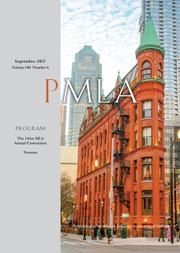No CrossRef data available.
Article contents
Creolization Otherwise: Centering the Local Intertextualities of Ananda Devi's Pagli
Published online by Cambridge University Press: 14 December 2022
Abstract
As the literature of Creole societies severed ties with colonial literary models, a new literature conceptualized through scholarly and literary conversations on creolization emerged. In a zeal to amplify Creole solidarity against colonial dominance, however, these conversations unfortunately erased the internal hierarchies and linguistic unevenness among the formerly colonized, uniting them all under the banner of the Creole language. The aesthetics of the literature of creolization is consequently read through the lens of a strict dichotomy opposing the colonized, Creole, and orality to the hegemony of the colonizer, the colonizing language, and writing. Reading the Mauritian novelist Ananda Devi's Pagli (2001) in depth, I reveal a novel that goes against this trend and bears witness, through its very textuality, to the complexity of racial and linguistic stratifications in Creole societies, without flattening them into dichotomies. In this light, it constitutes a necessary theoretical intervention in the field of creolization aesthetics.
Information
- Type
- Essay
- Information
- Copyright
- Copyright © 2022 The Author(s). Published by Cambridge University Press on behalf of the Modern Language Association of America

